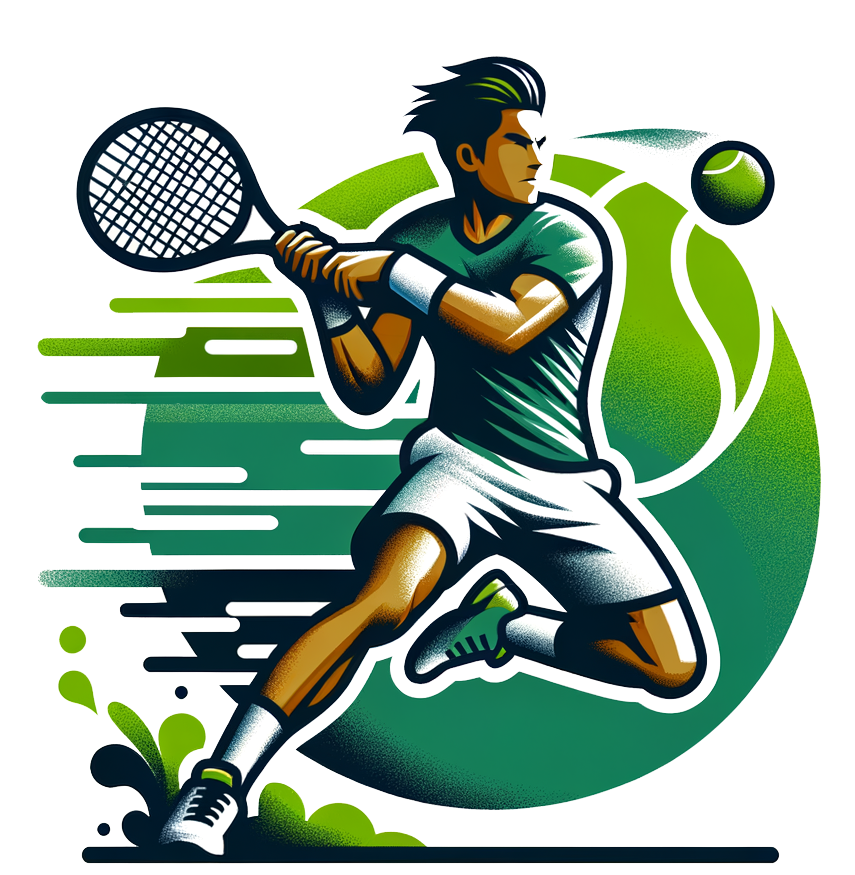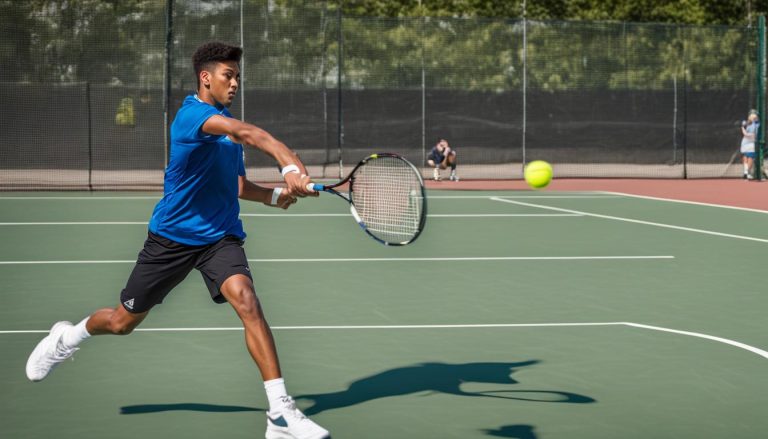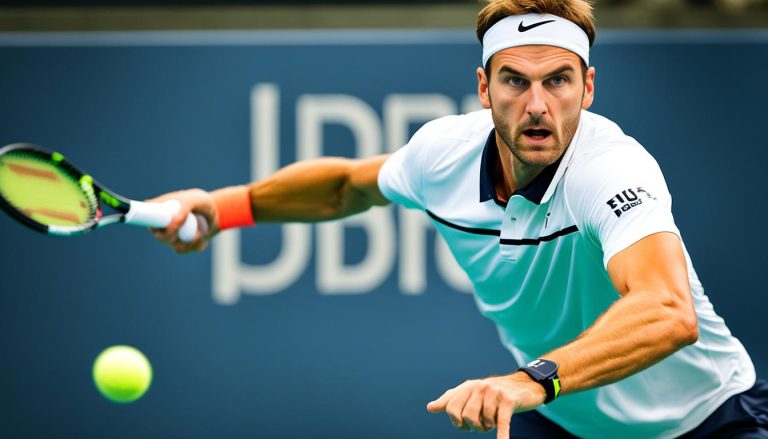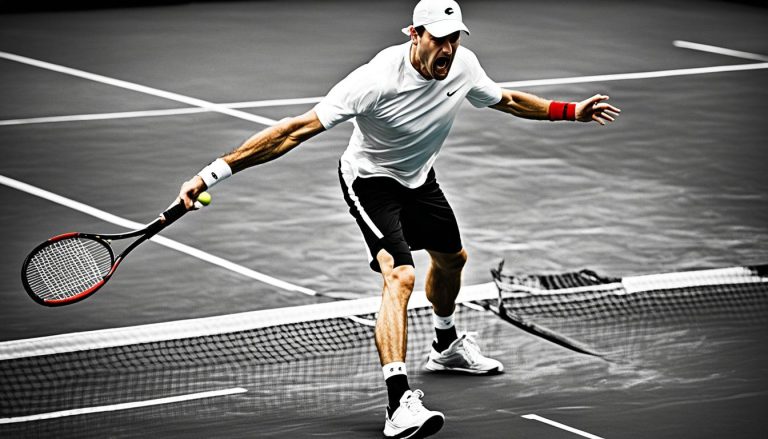Secrets to a Powerful Overhead Smash in Tennis
The overhead smash, also known as a smash, is a crucial shot in tennis that can be a devastating weapon when executed properly. While it is a powerful tool for professional players, recreational players often struggle with this shot. In this article, we will explore the secrets to mastering the overhead smash, including grip, technique, positioning, and tactics.
Are you looking to improve your tennis game and unleash a powerful overhead smash? Look no further! This article will reveal the secrets to a powerful overhead smash in tennis that will take your game to the next level.
The Importance of a Proper Grip
The first step to a powerful overhead smash is using the correct grip. The Continental grip is the preferred grip for this shot, as it allows for maximum power and the ability to add slice if desired. The grip should be firm but not too tight, as this can affect the fluidity and rhythm of the swing.
“The Continental grip is crucial for mastering the overhead smash. Not only does it provide the necessary power, but it also allows for versatility in shot selection.”
The wrist should be loose and relaxed to generate maximum power and control. With the Continental grip, there is no need to change grips when transitioning from volleying to smashing lobs.
Mastering the Swing Technique
The swing technique for the tennis overhead smash is crucial for executing a powerful and accurate shot. A proper swing allows players to generate maximum power and control while maintaining a smooth and fluid motion. To master the swing technique, players should focus on the key elements of the swing and practice them consistently.
- Starting Position: The swing starts at the head level with the racket dropping behind the back in the backscratching position, with the elbow fully bent. This position allows players to generate momentum and prepare for a powerful swing.
- Weight Transfer: As the swing progresses, transfer the weight forward, using a baseball throw motion. This weight transfer adds power to the shot and allows players to generate a forceful impact on the ball.
- Arm Extension: It’s important to hit the ball when the arm is fully extended. This extension provides the necessary power to drive the ball downward with force. Players should focus on timing their swing to ensure maximum extension at the point of contact.
- Rhythmic Motion: While the swing does not have to be continuous, a rhythmic motion is preferable. A smooth and coordinated swing allows players to maintain control and accuracy throughout the shot.
- Wrist Snap: The wrist snap, also known as pronation, plays a crucial role in generating maximum power. As the swing progresses, players should focus on snapping their wrists at the point of impact, adding extra speed and spin to the shot.
- Contact Point: The contact point should be slightly to the right of the body, enabling players to strike the ball with precision and power. It’s important to focus on the proper alignment and positioning to ensure a clean and effective shot.
- Follow-Through: A smooth follow-through completes the swing and helps maintain control and balance. Players should aim for a fluid motion after striking the ball, ensuring a consistent and effective finish.
By mastering the swing technique, players can enhance their overhead smash and unleash a powerful shot that leaves opponents in awe.
“The swing is the thing. With the right technique and mechanics, players can maximize the power and accuracy of their overhead smash.”
– Tennis Coach Jane Adams
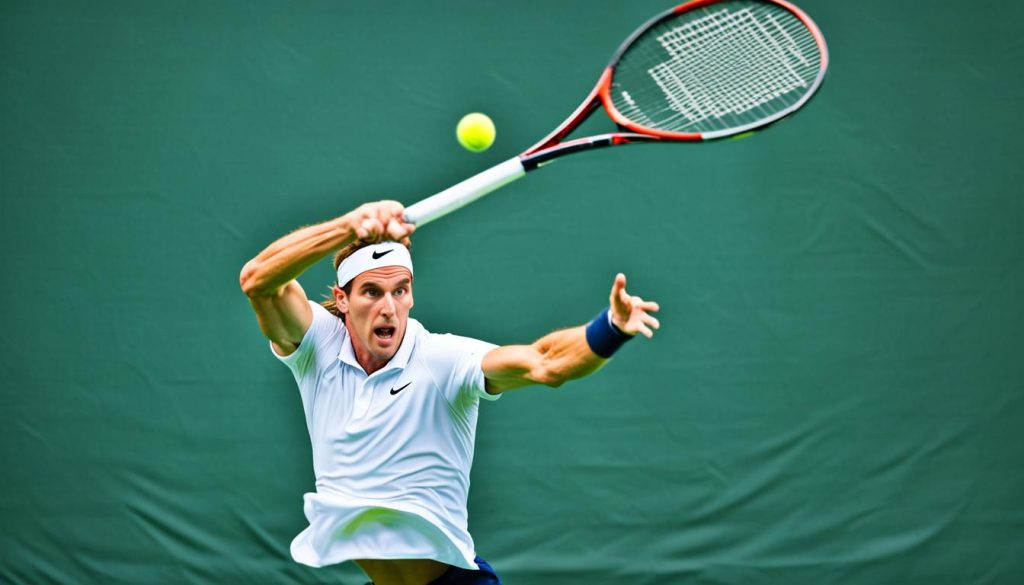
Varying the Contact Point
The effectiveness of the overhead smash in tennis largely depends on the player’s ability to vary the contact point. The contact point refers to the exact location where the racket makes contact with the ball during the overhead swing. By adjusting the contact point, players can adapt to different court positions and achieve better results.
When a player is closer to the net, the ideal contact point for the overhead smash is above the right shoulder. This position allows for maximum power and control while creating an optimal angle for a downward trajectory. With the arm fully extended, the player can generate significant force and hit the ball with authority.
However, as players move farther from the net, the contact point should be slightly more in front of the body. This adjustment ensures that the ball is hit safely into the court, minimizing the risk of hitting it out. The objective is to strike the ball at the highest point possible to achieve maximum height and bounce, making it challenging for opponents to return.
The aim of the overhead smash, whether it’s a straight shot or a crosscourt hit, also influences the contact point. A straight overhead smash requires the contact point to be aligned with the intended target, whether it’s an open spot on the court or to exploit an opponent’s weakness. On the other hand, a crosscourt overhead smash demands a contact point slightly towards the opposite side of the court.
Slice overheads can be a valuable tool in a player’s arsenal. By slicing the ball during the overhead smash, players can achieve more spin and control, resulting in well-placed shots that are difficult for opponents to handle. Slicing is particularly useful when aiming for the sidelines or when trying to draw an opponent out of position.
“Varying the contact point during the overhead smash is essential for adapting to different court positions and maximizing the effectiveness of the shot.” – Professional tennis player
Tennis Overhead Smash Contact Points
| Player Position | Ideal Contact Point | Aim |
|---|---|---|
| Closer to the net | Above the right shoulder | Maximum power and control |
| Farther from the net | Slightly more in front of the body | Safely hit the ball into the court |
| Straight overhead smash | Aligned with the target | Exploit open areas or opponent weakness |
| Crosscourt overhead smash | Slightly towards the opposite side of the court | Change the direction of play |
By mastering the art of varying the contact point, players can add versatility and precision to their overhead smash, creating opportunities to dominate opponents and win crucial points. The ability to adjust the contact point based on court position, aiming objectives, and strategic choices is a hallmark of skilled tennis players.
Dealing with Various Conditions
Playing tennis requires adaptability, especially when dealing with different environmental conditions that can affect your overhead smash. Sun, wind, and rain are common elements that players must consider and make adjustments accordingly.
1. Sun
When facing the sun, players should anticipate lobs from their opponents. To counter this, it is crucial to adjust your positioning on the court and carefully watch the trajectory of the ball. By positioning yourself correctly and using efficient footwork, you can improve your chances of successfully executing the overhead smash.
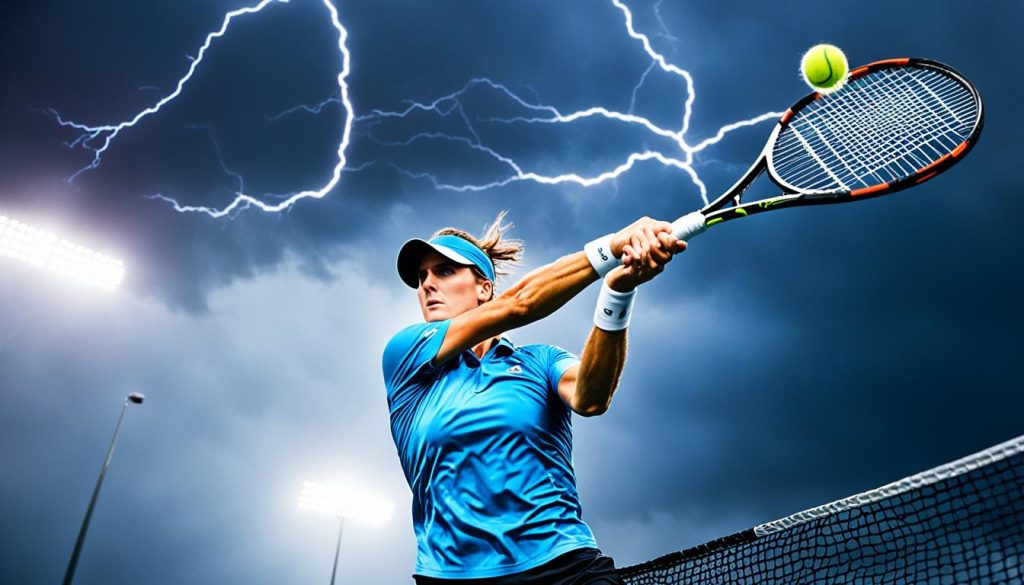
2. Wind
Windy conditions pose a challenge for the overhead smash. It’s important to closely track the ball while taking into account the unpredictable gusts of wind. Players should make small adjustments to their movement to ensure proper timing and contact with the ball. If the wind is causing the ball to sail erratically, players may need to sacrifice some power for better control or even let the ball bounce before attempting the overhead smash.
3. Rain and Slower Court Conditions
In wet conditions or on slower court surfaces, players may find it more difficult to execute a powerful overhead smash. In these situations, it may be necessary to hit multiple overheads to secure the point. By adjusting your swing and technique to account for the slower court, you can adapt and find the right balance between power and control.
Remember, practice and experience will help you become more comfortable with handling various conditions. Developing the ability to adjust your game according to the elements will give you a competitive edge on the court.
Power versus Placement
When it comes to executing the perfect overhead smash in tennis, finding the right balance between power and placement is crucial. The objective is to deliver a forceful shot that clears the net and lands deep into the corners of the court, making it difficult for your opponent to return. However, it’s important to avoid hitting the overhead smash too close to the lines, as this can increase the risk of errors.
To generate maximum power, it’s essential to utilize your entire body, not just your arm. Engage your legs and hips as you prepare to execute the overhead smash, generating rotational force that transfers into the swing. This will provide the necessary power to propel the ball with speed and force, making it challenging for your opponent to defend.
A smooth and fluid racquet swing action is also crucial for a powerful overhead smash. Maintain a relaxed grip and wrist, allowing for a natural extension of your arm during the swing. The fluidity of your swing will help optimize power and control, ensuring a clean contact with the ball for a decisive shot.
While power is important, placement is equally essential. Aim to target the corners of the court with your overhead smash, as this will further maximize the difficulty for your opponent. Placing the ball accurately in the corners can force your opponent into a defensive position or create opportunities for follow-up shots.
By striking a balance between power and placement, you can deliver a devastating overhead smash that sets you up for success on the tennis court. Take the time to practice and refine your technique, focusing on generating power from your entire body and aiming for precise placement. With dedication and attention to detail, you’ll soon be dominating the game with your formidable overhead smash.
| Power | Placement |
|---|---|
| Delivers impactful shots that are difficult to defend | Targets the corners of the court to maximize difficulty for the opponent |
| Relies on utilizing the entire body for maximum force | Aims for accuracy and precision in shot placement |
| Requires a smooth and fluid racquet swing action | Creates opportunities for follow-up shots and strategic positioning |
Conclusion
The overhead smash is a powerful weapon in the game of tennis. By implementing the secrets to a strong overhead smash, players can significantly enhance their performance on the court. The four key factors that contribute to a successful overhead smash are the correct grip, proper swing technique, varying the contact point, and adapting to different playing conditions.
Starting with the grip, using the Continental grip allows players to generate maximum power and maintain control over the shot. With a firm yet relaxed grip and a loose wrist, players can unleash their full potential.
Perfecting the swing technique is crucial for a strong overhead smash. Starting the swing at head level, dropping the racket behind the back, and utilizing a baseball throw motion are key elements to focus on. The involvement of the wrist snap and a smooth follow-through adds the finishing touch.
Varying the contact point based on positioning and shot type is essential for a well-executed overhead smash. Whether it’s hitting above the right shoulder when close to the net or slightly in front when farther away, the contact point significantly impacts the shot’s effectiveness.
Lastly, players must adapt to various conditions on the court. Whether it’s dealing with the sun obstructing vision or windy conditions affecting ball movement, the ability to adjust footwork and positioning is essential for successful overhead smashes.
With practice and dedication to these secrets, players can take their overhead smash to the next level. Mastering this powerful shot will leave opponents in awe, giving players a competitive edge on the tennis court.
